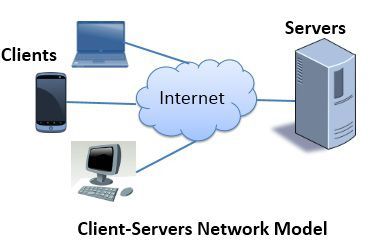Difference Between Client-Server and Peer2Peer Connection
Client-Server Architecture
• The server is always-on while a client can be randomly run.
• The server is listening on the network and a client initializes the communication.
• Upon the requests from a client, the server provides certain services to the client.
• Usually, there is no communication between two clients.
• The server has a fixed IP address.
• A client contacts the server by sending a packet to the server's IP address.
• A server is able to communicate with many clients.
• The applications such as FTP, telnet, Web, e-mail etc use the client-server architecture.
P2P Architecture
• Pairs of hosts are called peers.
• The peers communicate directly with each other.
• The peers are not owned by the service-provider. Rather, the peers are laptops controlled by users.
• Many of today's most popular and traffic-intensive applications are based on P2P architecture.
• Examples include file sharing (BitTorrent), Internet telephone (Skype) etc.
• Main feature of P2P architectures: self-scalability.
• For ex: In a P2P file-sharing system, Each peer generates workload by requesting files. Each peer also adds service-capacity to the system by distributing files to other peers.
• Advantage: Cost effective ‘ Normally, server-infrastructure & server bandwidth are not required.
• Three challenges of the P2P applications:
1)ISPs:
Most residential ISPs have been designed for asymmetrical bandwidth usage. Asymmetrical bandwidth means there is more downstream-traffic than upstream-traffic. But P2P applications shift upstream-traffic from servers to residential I Ps, which stress on the ISPs.2) Security:
Since the highly distribution and openness, P2P applications can be a challenge to security.
3) Incentive Success of P2P depends on convincing users to volunteer bandwidth & resources to the applications.


Comments
Post a Comment